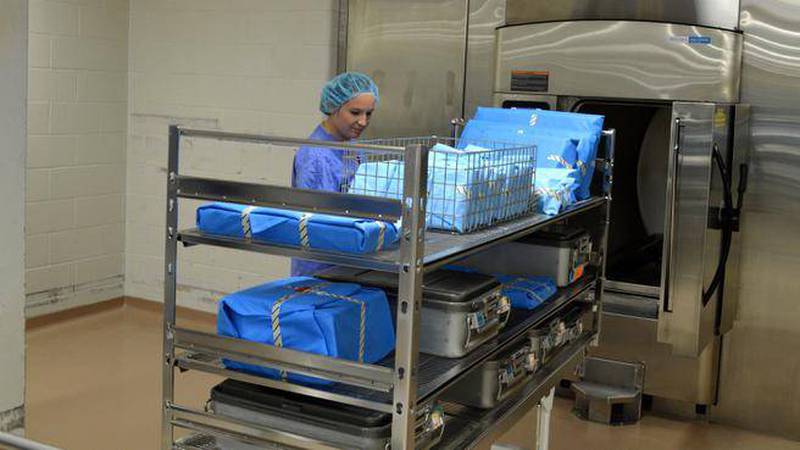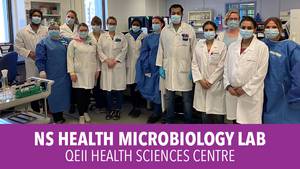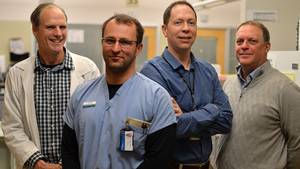Every day, staff at the QEII Health Sciences Centre’s medical device reprocessing department prepare for approximately 100 surgeries. Each surgery can require up to ten trays containing up to 100 instruments each. Everything is cleaned, decontaminated, inspected and assembled and then sterilized between patients.
But in April 2015, staff noticed black debris on some of the sterilized equipment. The instruments were re-sterilized, but the specks came back.
“We couldn’t make the debris go away. That’s when we decided to stop using them,” says Pam Hunter, manager of the medical device reprocessing department (MDR).
In addition to this, staining appeared on the tray wraps. “There were two very different issues. We have two sites with sterilizers, and we had a concern and an issue with both,” says Joanne Dunnington, health services director.
Without sterile instruments, operations came to a halt. They shut down both sites of the QEII, apart from emergency surgeries, as they implemented their backup plan.
The QEII turned to their community partners. Hospitals around the province, from the Annapolis Valley to Truro, started sterilizing instruments for them. That required a complex logistical arrangement to keep the instruments circulating for sterilization at those locations and back to Halifax for surgeries. QEII staff travelled to some of those facilities to help sterilize the instruments.
“We tried to keep the heavier, more critical instrumentation here in the city, then courier and ship out some of the other instrumentation,” Pam says.
“The process was incredibly complex and labour-intense,” Joanne adds. “The work the MDR staff did to allow us to get back up to a fully functioning operating room within a couple of days was incredible.”
That speed minimized delays for people needing surgeries on their brains, hearts and spines, among other crucial operations. Joanne says the experience made everyone aware of the crucial work the MDR does, away from the public eye. She compares it to watching a duck swim: calm up top in the operating suite while the MDR staff work at a frantic pace to keep the system moving.
“What happens down there makes the miracle of what happens in the operating room a reality,” Joanne says.
Parallel to this new logistical plan, a multi-faceted investigation was being lead into what had gone wrong, including talking to the machines’ manufacturers. “There was not one specific cause; there were multiple factors,” Joanne says.
They did find the black specks were sterile, non-biological minerals, meaning they never posed a danger. But they needed new machines, which wound up costing more than $1-million. The QEII Foundation contributed $450,000, and the provincial government funded the rest.
By the end of summer, operating room staff had caught up with all of the operations and today they are now working at 100 per cent capacity. “We’re full steam ahead,” Joanne says.
While no one ever wants such a test of their emergency plans, Joanne says it showed that staff will spot problems quickly and find solutions.
“It’s incredible, the amount of support that came from everyone,” Pam says. “The community, our doctors, our nurses, the operating rooms, our inpatient units, the QEII Foundation and the Department of Health and Wellness. It’s amazing.”
Joanne says it showed how great the MDR staff are and how they answered the call when trouble struck. “They stepped up,” she says.








